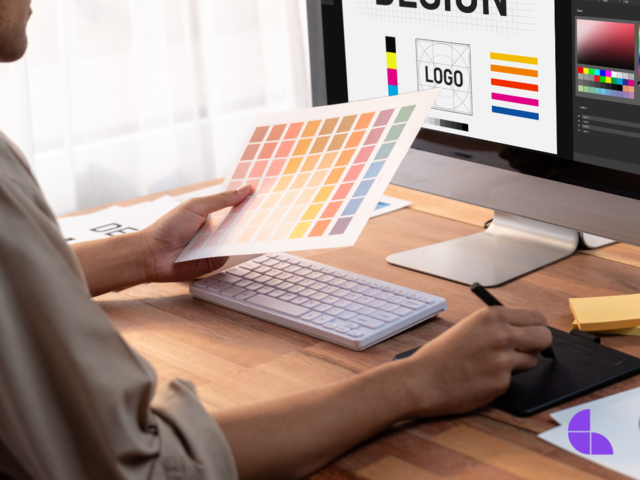When it comes to graphic design, typography has been known to fall into the category of an afterthought or lesser valuable element. But let this be a warning to you, typography can be the very thing that will make or break your design!
In simple terms it is the art and technique of arranging letters and choosing a font/size to make written language more appealing and readable. But typography is so much more than that. Let's take a look at this vital design element.

What exactly is typography?
Typography is the strategic use of type within a design to create visually appealing, legible and coherent text. It is how the letters or characters behave on the page or in a design. It is made up of a combination of the font, which is the chosen size and style of the letters / characters and the typeface which is how the characters are placed including kerning (spacing between individual letters), leading (vertical space between lines), and tracking (uniform adjustment of spacing characters).
Typography's role in Graphic Design
Typography is more than just the words in a graphic design. It is an essential component of visual communication, shaping the viewer's experience and engagement with the written content. It plays a huge part in improving the aesthetic of the design and can influence the viewer's perception while communicating an underlying tone or mood. Typography, in essence, serves as the 'visual voice' of a design, adding character and personality to the message it conveys.
Typography's influence on readability and accessibility
Bad typography means unreadability which is in essence, a failed graphic design. Poorly chosen fonts or incorrect typography can jar with a viewer. If the font is too traditional for a modern design or vice versa, the viewer will find it unsettling. The layout must be well thought out with clear and accessible information, and in a time when inclusivity is paramount, typography is critical in creating accessible designs for people with special needs, such as visually impaired readers.

Typography and corporate identity
Typography is a significant component of a brand's identity. A consistent typographic style throughout all marketing materials will help form brand recognition and will distinguish it from competitors. A typeface has its own personality and can elicit emotions or reactions. Selecting the right typeface can create and convey a brand's entire ethos. Coca-Cola's iconic script typeface for example, exudes a sense of fun and nostalgia, whereas Apple's use of sleek, minimalist typography reflects the company's commitment to innovation and design purity.
Typography in various design contexts
Typography exists in almost all forms of graphic design, including web design, print design, and logo design. It will impact the user experience and even the SEO in web design. Basically, a website with readable and appealing text tends to keep a visitor's attention for longer periods of time. Typography in print design influences how a reader interacts with a page and should guide them through the content. It can also improve brand recognition in logo design making a logo instantly identifiable.
Avoiding common typography errors
Typography can be a minefield and designers must keep an eye out for poor kerning, insufficient contrast, overuse of fonts, and even the cultural connotations of fonts. Poor kerning can make text difficult to read, and insufficient contrast can cause text to blend into the background. The use of too many fonts can be confusing and chaotic to the reader, and ignoring cultural connotations can send inappropriate or unintended messages. The first step toward avoiding these pitfalls is to understand them.

How to select the best typography
Choosing the right typography involves serious consideration for the purpose of the design. A designer must think about the target audience, and the medium; where will it be displayed and at what size. Scalability is an important question to ask. How will it read on a billboard advertisement versus a phone screen for example? The typeface needs to complement the purpose of the design and resonate with the intended audience. When in doubt, stick with simple, universally legible typefaces and only after that play around with styling (bold, italic, size variation).
Typography, while sometimes overlooked, is absolutely essential for effective graphic design. It's an important tool in the designer's toolbox and is the means by which the message is delivered. Whether you're a seasoned graphic designer or a newcomer to the field, honing your typography skills is critical to creating designs that are not only visually appealing but also functional.
Now that you understand the significance of typography in graphic design, we'd love to hear your thoughts and experiences. Have you ever seen a design in which typography enhanced the overall aesthetic? Or perhaps one in which the design was flawed? Leave your thoughts in the comments section of this blog post.
If you want to learn more about typography and other important graphic design principles, check out our Graphic Design Academy's extensive course offerings. Take your typography skills to the next level and elevate your designs!


